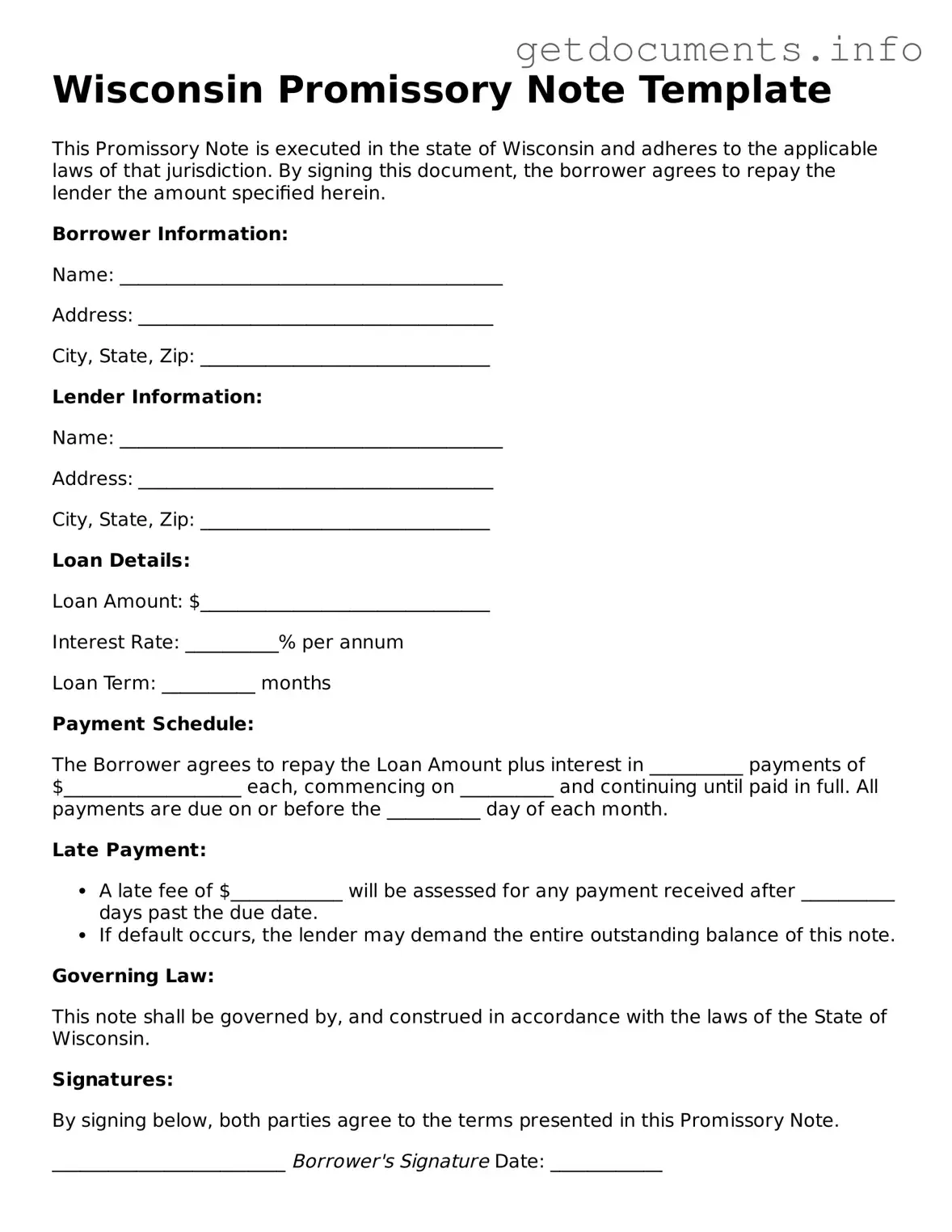Free Promissory Note Template for Wisconsin
A Wisconsin Promissory Note is a legal document in which one party promises to pay a specified sum of money to another party under agreed-upon terms. This form serves as a written record of the debt, detailing the amount owed, interest rates, and payment schedule. For those looking to formalize a loan agreement, filling out the Promissory Note form is an essential step; click the button below to get started.
Access Promissory Note Editor
